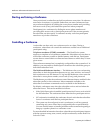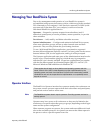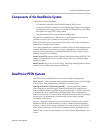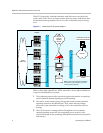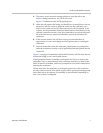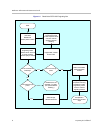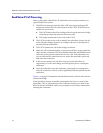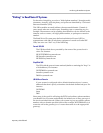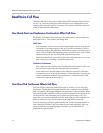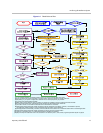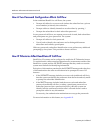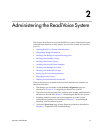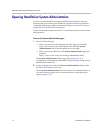
ReadiVoice Administration & Maintenance Guide
10 Proprietary & Confidential
ReadiVoice-IP Call Processing
When a caller dials a ReadiVoice-IP subscriber’s access phone number on a
typical ReadiVoice system:
1 The SIP Invite message from the caller‘s SIP user agent (perhaps a SIP
telephone) reaches the call-control portion of the CACS. If the SIP invite
contains no access code:
a The CACS directs the call to a bridge with a free port and runs a bridge
script that prompts the caller for the access code.
b The bridge returns that access code to the CACS.
2 The CACS uses the access code to identify the subscriber account. Its call
router allocates bridge resources according to the service description of
the subscriber just identified.
3 The CACS connects the call to the bridge just chosen.
4 When the call reaches the bridge, an interactive call flow script guides the
caller into the conference. The script handles subscriber identification and
collection of the optional conference security code. Non-subscribers are
put on hold until the subscriber arrives, enters the subscriber password,
and starts the conference.
5 If the account permits, the call flow script gives the subscriber an
opportunity to review and change account options prior to starting the
conference.
6 Once the subscriber starts the conference, participants are prompted to
enter the conference security code (if applicable) and then placed into the
conference.
Figure 1-4 on page 13 summarizes the ReadiVoice basic call flow after the call
reaches the bridge.
If the Quick Start feature is enabled, participants don’t have to wait for the
subscriber. They’re placed directly into conference instead of on hold. If the
Roll Call feature is enabled, callers are prompted to record their name before
entering the conference.



